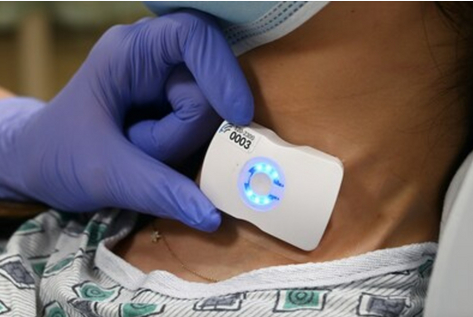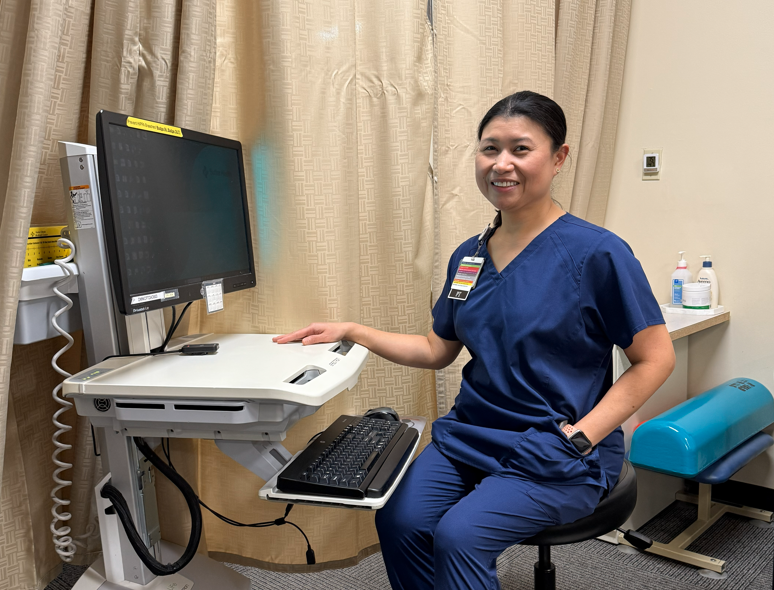Major California health system leads adoption of FloPatch, a device offering clinical teams real-time data to reduce the risk of giving too much or too little fluid – both of which can lead to serious complications
NORTHERN CALIF. – Sutter Health, an integrated not-for-profit healthcare system based in Northern California, and Flosonics Medical today announced an expansion of the deployment of FloPatch, the first wireless wearable Doppler ultrasound device, across multiple hospital sites to support more precise and timely intravenous fluid management. This multisite deployment includes Sutter’s Alta Bates Summit Medical Center, Summit Campus in Oakland and Sutter Santa Rosa Regional Hospital in Sonoma County. Implementations span the Emergency Department, Intensive Care Unit, Medical-Surgical Unit and Telemetry Unit. With these additions, six Sutter hospital campuses have now deployed FloPatch over the past year and include Sutter’s Eden Medical Center in Castro Valley, Sutter’s CPMC in San Francisco at CPMC Van Ness, Davies and Mission Bernal Campuses.
IV fluid overload is a common complication in emergency and intensive care settings, in part because predicting a patient’s response to fluids is complex. Individual needs can vary widely and shift quickly during critical illness. In studies of patients with sepsis and septic shock – a life-threatening condition caused by the body’s overwhelming response to infection – nearly one-third were found to be fluid unresponsive¹. Without early identification of fluid unresponsiveness, patients may receive excessive fluids, increasing their risk of serious complications such as pulmonary edema, where fluid accumulates in the lungs. By some estimates, fluid overload can extend the average hospital stay by three days and increase healthcare costs by more than $15,000 per patient².
FloPatch is an FDA-cleared, wearable device that provides clinicians with a fast and non-invasive way to perform hemodynamic assessments, measuring a patient’s heart and blood flow response to IV fluids to help guide personalized fluid therapy. Clinical studies have shown that dynamic fluid assessments can reduce the need for mechanical ventilation and renal replacement therapy³,⁴, decrease ICU length of stay⁴, and are associated with lower mortality⁵.
“Our previous method of assessing fluid responsiveness was cumbersome and time-consuming. We often had to pull ICU nurses to perform evaluations in other units, which was disruptive and inefficient,” said Dr. Nader Emami, ICU medical director at Sutter Santa Rosa Regional Hospital. “FloPatch streamlines the process with a simple, wearable device that empowers any member of the care team to perform this essential assessment faster and easier.”
“In emergency care, we often treat patients with complex needs, including people with sepsis,” said Dr. John Skovran, Emergency Department medical director at Sutter’s Alta Bates Summit Medical Center, Summit Campus. “We need a fast, reliable way to determine whether they’ll benefit from fluids or be harmed by them. FloPatch gives us that clarity at the bedside in minutes, helping us make confident, timely decisions.”
Joe Eibl, chief executive officer and co-founder of Flosonics Medical, noted: “Sutter Health’s multisite adoption of FloPatch reflects a growing recognition that wearable, real-time technologies play a transformative role in patient care. It’s a great example of how forward-thinking health systems are meeting critical challenges with innovation.”
Sutter Health prioritized staff training and thoughtfully integrated FloPatch into clinical workflows to make it a seamless part of care in intensive care and emergency medicine departments.
References:
¹ Hernández G, Ospina‑Tascón GA, Damiani LP, et al; ANDROMEDA‑SHOCK Investigators. Effect of a resuscitation strategy targeting peripheral perfusion status vs serum lactate levels on 28‑day mortality among patients with septic shock: the ANDROMEDA‑SHOCK randomized clinical trial. JAMA. 2019 Feb 19;321(7):654–664. doi:10.1001/jama.2019.0071
² American Hospital Directory analysis of FFY2022 Medicare IPPS (MedPAR) claims data
³ Douglas IS, Alapat PM, Corl KA, Exline MC, Forni LG, Holder AL, et al. Fluid Response Evaluation in Sepsis Hypotension and Shock: A Randomized Clinical Trial. Chest. 2020 Oct;158(4):1431–1445. doi:10.1016/j.chest.2020.04.025
⁴ Latham HE, Bengtson CD, Satterwhite L, et al. Stroke volume–guided resuscitation in severe sepsis and septic shock improves outcomes. J Crit Care. 2017 Dec;42:42–46. doi:10.1016/j.jcrc.2017.06.028
⁵ Dubin A, Loudet C, Kanoore Edul VS, et al. Characteristics of resuscitation, and association between use of dynamic tests of fluid responsiveness and outcomes in septic patients: results of a multicenter prospective cohort study in Argentina. Ann Intensive Care. 2020 Apr 15;10(1):40. doi:10.1186/s13613-020-00659-7





